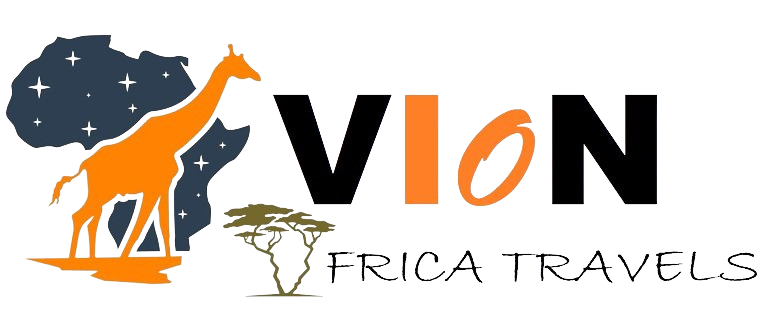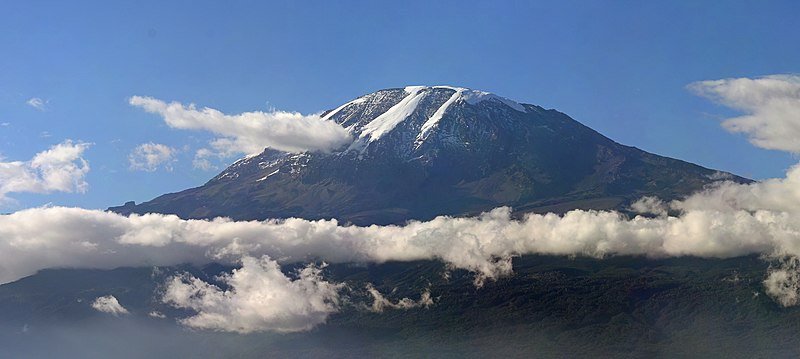Mount Kilimanjaro Location: Mount Kilimanjaro, one of Africa’s most iconic landmarks, captivates adventurers and nature lovers worldwide. As the tallest mountain on the continent, Kilimanjaro offers stunning views and a rewarding climbing experience. In this guide, we’ll explore where Mount Kilimanjaro is located, its geographical significance, and why it should be on your travel bucket list.
Location of Mount Kilimanjaro
Mount Kilimanjaro is situated in northeastern Tanzania, near the border with Kenya. It’s located within Kilimanjaro National Park, established in 1973 to protect the mountain’s unique ecosystems. The coordinates for Kilimanjaro are approximately 3.0674° S latitude and 37.3556° E longitude.
Proximity to Major Cities
The nearest major city is Arusha, about 100 kilometers (62 miles) from the mountain. Arusha serves as the primary gateway for climbers and tourists. Additionally, Kilimanjaro International Airport (JRO) is located around 40 kilometers (25 miles) from the mountain, making it easy for international travelers to reach this magnificent peak.
Geographical Significance
Overview of Kilimanjaro
Kilimanjaro is a stratovolcano made up of three volcanic cones: Kibo, Mawenzi, and Shira. Kibo is the highest at 5,895 meters (19,341 feet) above sea level. The mountain’s unique features contribute to diverse ecosystems, ranging from tropical rainforests at its base to alpine deserts and glaciers near the summit.
Ecosystems and Biodiversity
The slopes of Kilimanjaro host various ecosystems that change dramatically with altitude:
- Rainforest Zone: The lower slopes are lush and dense, teeming with wildlife such as monkeys, birds, and numerous plant species.
- Heath and Moorland Zone: As you ascend, the rainforest gives way to heath and moorland, characterized by giant heathers and wildflowers.
- Alpine Desert Zone: Higher up, the environment becomes more arid, featuring rocky terrain and limited vegetation.
- Glacier Zone: The summit region is covered in glaciers and ice fields, showcasing the mountain’s dramatic elevation.
Why Climb Mount Kilimanjaro?
A Challenging Adventure
Climbing Mount Kilimanjaro is a bucket-list experience for many. The challenge of reaching Uhuru Peak attracts trekkers of all skill levels. Unlike technical climbs that require advanced skills, Kilimanjaro can be summited via well-defined trekking routes, making it accessible to many adventurers.
Stunning Scenery
The journey to the summit offers breathtaking views. As you ascend, you’ll witness stunning landscapes, from lush rainforests to stark rocky peaks. Sunrises and sunsets over the mountain create unforgettable memories.
Unique Flora and Fauna
The diverse ecosystems of Kilimanjaro provide a chance to experience various plant and animal species, some endemic to the region. Birdwatchers will find the mountain a paradise with numerous bird species inhabiting its slopes.
Popular Routes to the Summit
Mount Kilimanjaro has several established routes for climbers, each offering a unique experience. Here are some of the most popular routes:
1. Machame Route
Often called the “Whiskey Route,” the Machame Route is favored for its scenic beauty and gradual ascent. Typically taking six to seven days, it allows climbers to acclimatize effectively while enjoying stunning views.
2. Marangu Route
Known as the “Coca-Cola Route,” the Marangu Route is the only one offering hut accommodations. It’s one of the easiest routes, making it popular among first-time climbers. This trek usually takes five to six days, but its rapid ascent can be challenging for acclimatization.
3. Lemosho Route
The Lemosho Route is celebrated for its remote beauty. Taking about seven to eight days, it offers a diverse range of ecosystems and is ideal for those seeking a less crowded experience.
4. Rongai Route
Approaching from the northern side, the Rongai Route provides a unique perspective of the mountain. Less frequented and typically taking six to seven days, it’s a great choice for those seeking solitude.
5. Northern Circuit Route
The Northern Circuit is the longest route, taking around eight to nine days to complete. It offers incredible views and a chance to experience various ecosystems, ideal for those wanting an immersive adventure.
Best Time to Climb Mount Kilimanjaro
The best time to climb Mount Kilimanjaro is during the dry seasons, typically from June to October and January to March. During these months, the weather is more stable, and the trails are less muddy.
- June to October: This peak climbing season features clear skies and cooler temperatures. Wildlife is also more active, providing opportunities for exploration in surrounding national parks.
- January to March: This period offers dry weather, with slightly fewer crowds than the mid-year months, making it a favorable option for those seeking a quieter experience.
Preparing for Your Kilimanjaro Adventure
Physical Training
Climbing Kilimanjaro requires good fitness. Engage in a training program that includes cardiovascular exercises, strength training, and hikes in hilly terrain to prepare your body for the challenge.
Packing Essentials
Proper gear is essential for a successful ascent. Key items to include in your packing list are:
- Layered Clothing: Temperatures vary significantly with altitude, so pack layers for comfort.
- Quality Hiking Boots: Invest in sturdy, comfortable hiking boots that provide ankle support.
- Sleeping Gear: A warm sleeping bag suitable for cold temperatures is crucial for camping overnight.
- Hydration System: Staying hydrated is essential, so consider a hydration pack or water bottles.
- First Aid Kit: Pack a basic first aid kit, including altitude sickness medication.
Choosing a Tour Operator
Selecting a reputable tour operator is critical to a successful Kilimanjaro climb. Look for companies with positive reviews, experienced guides, and a commitment to safety and sustainability. Viona Africa Travels specializes in Kilimanjaro climbs and can help you plan a memorable adventure.
Cultural Experiences Around Kilimanjaro
A trip to Mount Kilimanjaro offers more than climbing. The surrounding regions are rich in culture and history. Take time to engage with local communities, learn about the Chaga people who inhabit the region, and explore traditional villages.
Visiting Moshi
The town of Moshi, located at the base of Kilimanjaro, is a vibrant hub for trekkers. It offers various accommodations, restaurants, and shops. Spending a few days in Moshi before or after your climb allows you to acclimatize and experience local culture.
Exploring Chaga Culture
The Chaga people have a rich heritage and unique traditions. Consider taking a cultural tour to learn about their farming practices, traditional music, and local cuisine. This immersive experience adds depth to your Kilimanjaro adventure.
Conclusion: Your Kilimanjaro Journey Awaits
Mount Kilimanjaro stands as a testament to Africa’s natural beauty and adventure opportunities. Whether you’re drawn to its towering peak, diverse ecosystems, or rich culture, a journey to Kilimanjaro promises unforgettable experiences.
At Viona Africa Travels, we’re dedicated to helping you plan the perfect trip to Mount Kilimanjaro. Our knowledgeable team can assist with everything from route selection to gear recommendations.
Start Your Adventure Today!
Are you ready to take on the challenge of Africa’s tallest mountain? Contact us today to begin planning your epic adventure to Mount Kilimanjaro. The journey of a lifetime awaits!



